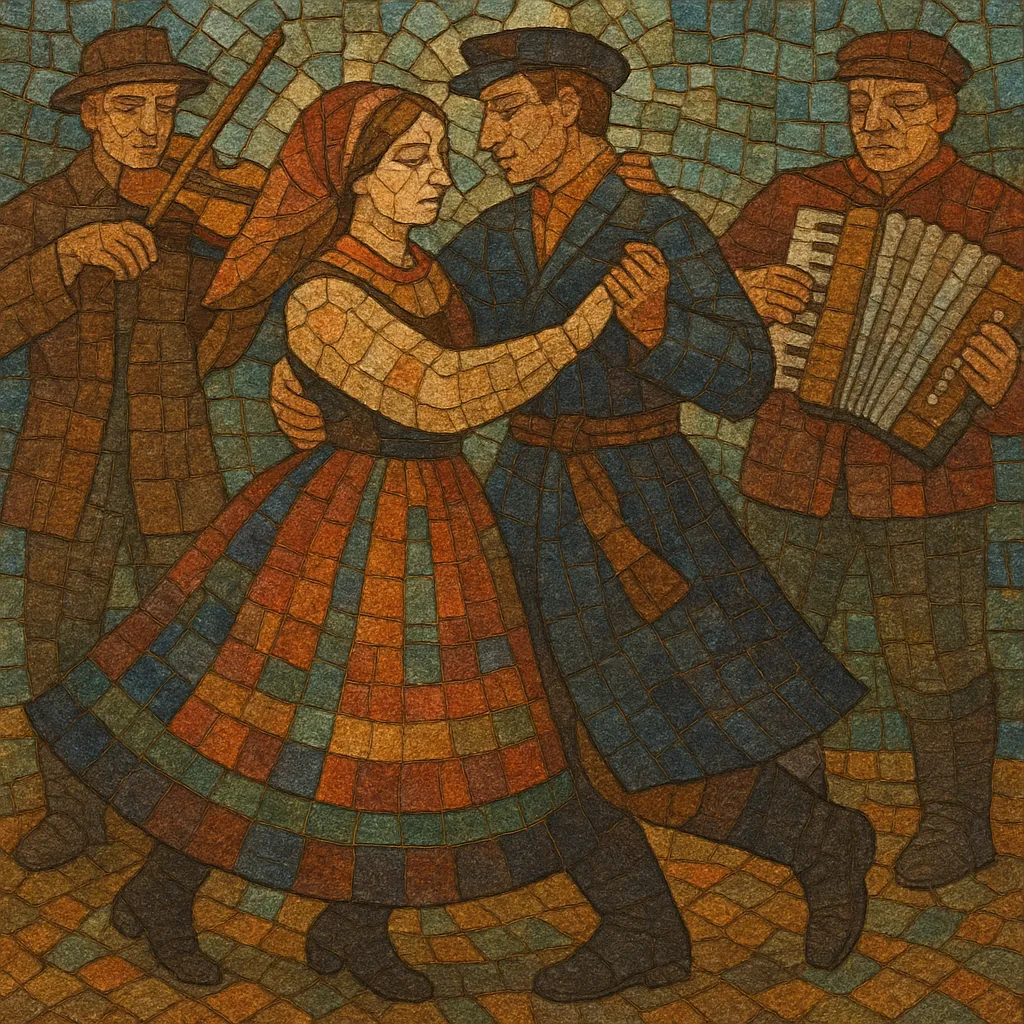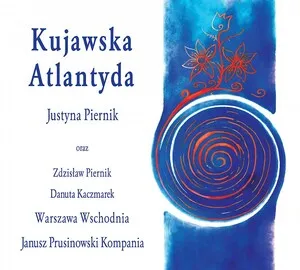Kujawiak is a traditional Polish folk dance and musical genre from the Kujawy (Kuyavia) region of central Poland.
It is a slow, lyrical member of the mazurka family, performed in triple meter (typically 3/4) with a characteristic rubato and a gentle, swaying motion. Accents often fall on the second or third beat, and melodic lines are ornamented and flowing, giving the music a tender, nostalgic quality. In dancing, couples rotate smoothly and travel in a circle, emphasizing elegance and subtle expressivity rather than virtuoso footwork.
Instrumentally, village bands historically featured fiddle (leading melody), basy (a rustic bowed bass), clarinet or shepherd’s pipe, and later accordion; contemporary ensembles may add guitar, flute, or cymbal/side drum. As a musical idiom, kujawiak has been stylized by classical composers and is a central emblem of Polish national-romantic expression.
Kujawiak emerged in the rural culture of the Kujawy region in the late 18th to early 19th century, crystallizing as a distinct, slow triple-time dance within the broader Polish mazurka tradition. Its name references the region and its people, and the style’s lyrical character reflects local singing and fiddle practices.
During the 19th century, kujawiak spread beyond village festivities to urban salons and concert stages as Poland’s folk idioms became symbols of national identity. Ethnographers like Oskar Kolberg documented regional variants, steps, and melodies, helping fix the genre’s profile (rubato feel, second/third-beat accent, and flowing dance turns).
Kujawiak’s expressive rhythm and modal color entered the European concert repertoire through stylizations by Polish composers. Fryderyk Chopin infused many of his mazurkas with kujawiak-like tempo and accentuation; later, violinist-composers such as Henryk Wieniawski wrote explicit Kujawiak pieces, and Grażyna Bacewicz composed kujawiaks for violin and piano, further codifying the idiom in art music.
After mid-20th-century institutionalization by state song-and-dance ensembles (e.g., Mazowsze, Śląsk), a roots revival re-centered village-style performance practice. Contemporary Polish folk groups and dance associations teach and perform kujawiak with renewed emphasis on regional style, ornamentation, and improvisatory rubato, while crossover and world-folk projects introduce the genre to international audiences.




